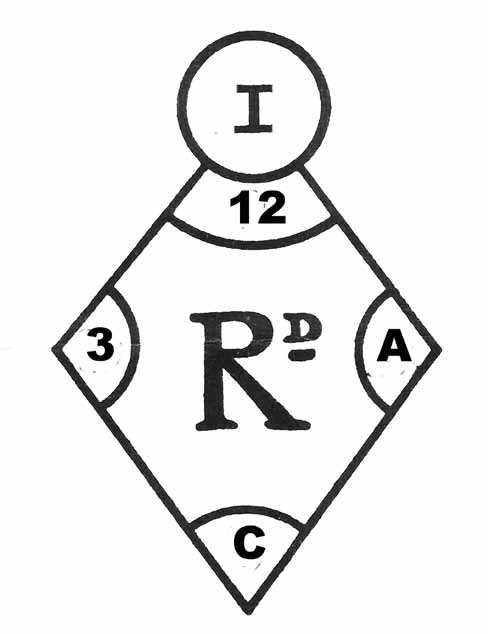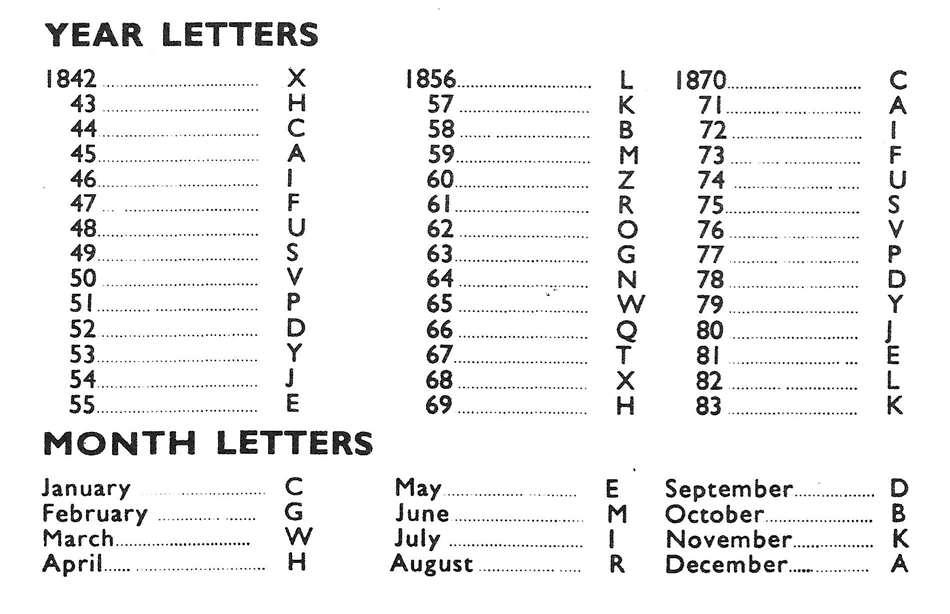How to interpret Registration Marks
(1842-1883)
To deter piracy of designs, manufacturers could 'register' their design with the Board of Trade. The system was in use from 1842 to 1883 and applied to decorative articles of metal, pottery, glass, textiles etc.
The registered item carried a 'diamond' mark to show it was authentic. From the diamond mark the date of registration and the class of goods could be determined. Many sewing machine designs and treadle bases were registered and carry the diamond mark on the casting or in the decoration.
How did it work? You need the code for the letters and numbers in the diamond. All sewing machines are metal so there is a roman one (I) in the circle at the top. Between 1868 and 1883 the code was as follows:
- below the circle is the day of the month of registration
- at the bottom is the month of registration
- the year is shown in the right hand corner
- the left hand corner is the manufacturer's code number for the item.

My diagram shows the registration mark on the "Challenge" sewing machine to be 12 January 1871.
Not many sewing machine designs were registered before 1868 but they used a different positioning of the code:
- below the circle is the year
- the left hand corner is the month
- the right hand corner is the day of the month
- the bottom corner is the manufacturer's number.
In the box are the code letters for the years from 1842-1883 and for the months.







